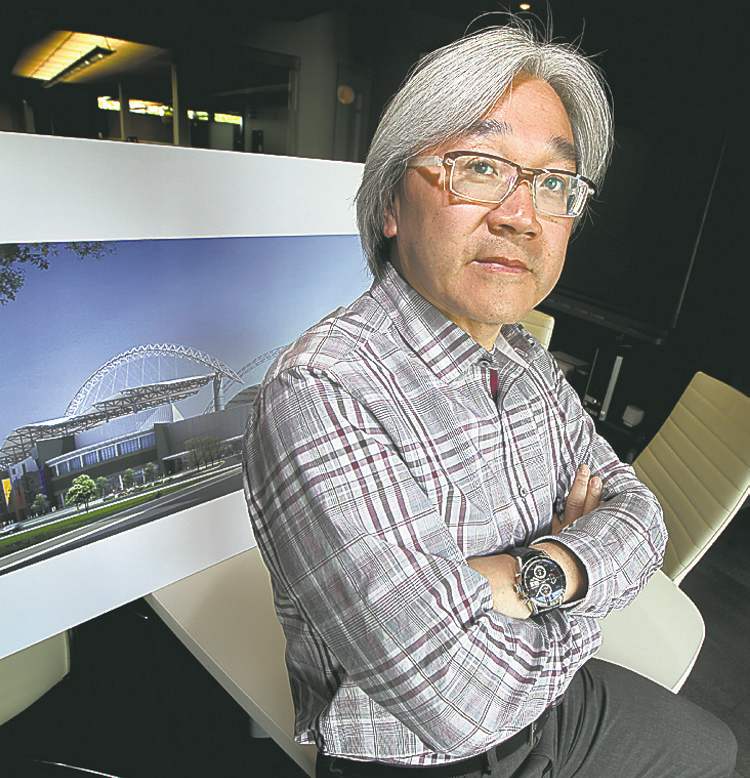In Conversation with… Ray Wan
Advertisement
Read this article for free:
or
Already have an account? Log in here »
To continue reading, please subscribe:
Monthly Digital Subscription
$0 for the first 4 weeks*
- Enjoy unlimited reading on winnipegfreepress.com
- Read the E-Edition, our digital replica newspaper
- Access News Break, our award-winning app
- Play interactive puzzles
*No charge for 4 weeks then price increases to the regular rate of $19.00 plus GST every four weeks. Offer available to new and qualified returning subscribers only. Cancel any time.
Monthly Digital Subscription
$4.75/week*
- Enjoy unlimited reading on winnipegfreepress.com
- Read the E-Edition, our digital replica newspaper
- Access News Break, our award-winning app
- Play interactive puzzles
*Billed as $19 plus GST every four weeks. Cancel any time.
To continue reading, please subscribe:
Add Free Press access to your Brandon Sun subscription for only an additional
$1 for the first 4 weeks*
*Your next subscription payment will increase by $1.00 and you will be charged $16.99 plus GST for four weeks. After four weeks, your payment will increase to $23.99 plus GST every four weeks.
Read unlimited articles for free today:
or
Already have an account? Log in here »
Hey there, time traveller!
This article was published 08/06/2013 (4583 days ago), so information in it may no longer be current.
RAY WAN has been a part of the new Blue Bombers stadium initiative for eight years and has experienced the many highs and lows associated with the project.
From the original design — featuring flat canopies held by two swooping arcs that meet high above the centre of the field at the Polo Park location — to the modified trusses of Investors Group Field, the principle at Winnipeg’s Raymond S.C. Wan Architect has been standing by and quietly waiting for reviews to trickle in.
And with the main tenant currently going through the paces of a CFL training camp leading up to an exhibition game Wednesday, the stadium has transformed from an artist’s rendering to a construction headache to a working facility.

Wan shared a few thoughts on the stadium with the Free Press this week:
Q. The canopies and trusses are the signature feature of Investors Group Field, so let’s start there.
A. “As you recall, there was a whole public debate about it being a completely enclosed structure because of the winter elements while others argued the sport is meant to be played outdoors, that most of the use will be in the summer. In order to compromise for both — and also keeping the noise issue in check because of location near residential — we decided on a structure that could give the project a little of both without limiting the spectator view. Borrowing a concept that we had from the two-arc design from the Polo Park model, we started to develop a ‘bow concept’ — having the arcs supporting the roof down below.”
Q. CenturyLink Field in Seattle (home to the NFL’s Seahawks) is famously known as a crowd-noise amplifier. Though not equal in design, there is a kinship architecturally and many expect Investors Group Field to perform the same way. Will it?
A. “Time will tell if that’s the case. We do know through a few test events that the sound seems to be captured down at field level that the old Polo Park stadium couldn’t do. The undulated shape of the structures certainly will help hold the sound in. The (One Heart Winnipeg church service) event really helped us understand just how the sound gets to field level and how it stays there.”
Q. Was this sound-retention element realized during the design phase?
A. “No, not exactly. We didn’t have an acoustical consultant on it but we have done theatres and cinemas and performance centres before and learning from previous projects we are kind of applying it to an outdoor facility. Noise, we always like to make sure the fan experience is excitement and you want to capture the noise inside rather that have it dispersed outside the stadium. We think this has been achieved.”
Q. Were the canopies and trusses ever close to being scrapped?
A. “A few times, and it was always a discussion. Some of the stronger vision people, like David Asper and my stubbornness, were insistent.”
Q. What are your impressions of the finished product?
A. “I’d say we got 99 per cent of what our vision was.”
Q. And the one per cent that missed the mark?
A. “The schedule, that’s the one. It was really unfortunate that it couldn’t come together as it should have, and I don’t want to single out anybody for why that was. It’s a collaborative effort from a number of parties. We had an original timeline (the stadium was scheduled to open in June 2012) and we all believed in it. Looking back, we should have been a little more conservative.”
Q. Lengthy construction delays, issues with the football operations configuration, lately there’s some negativity concerning the press box sightlines — as the architect, how do you handle criticism of the project?
A. “I take it as input. When we first placed the press box location, everyone complained that they (the media) wouldn’t be able to see the field. If you go to the press box now, you don’t have to turn your head to write your article. Should it be entirely enclosed? That’s budget driven. It’s all budget driven. For a $190-million project like this, I can guarantee you today if we priced the same project out it would be at least twice the cost. We have a very good deal here that we’re getting.”
adam.wazny@freepress.mb.ca


